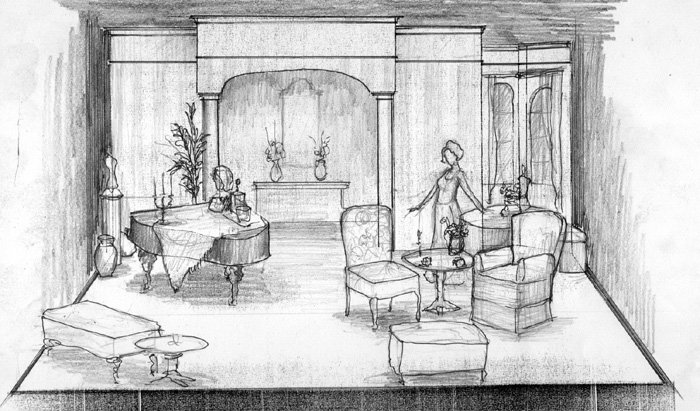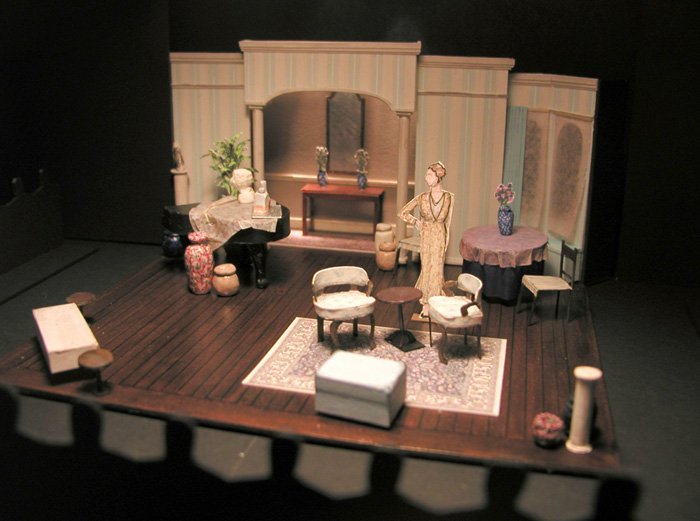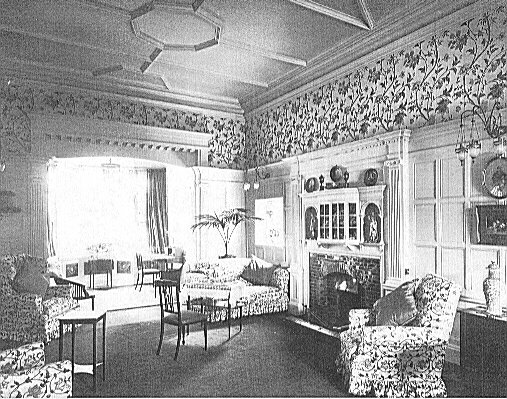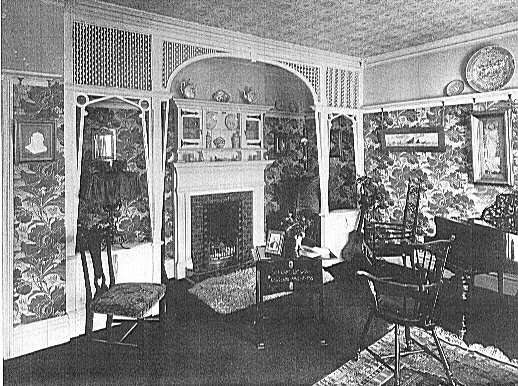Fallen Angels
by Noel Coward
Ovation Theatre Company, Cincinnati, Ohio
Fifth Third Bank Theatre, Aronoff Center for the Performing Arts
About the Design
Fallen Angels dates from 1925. Coward seems to be having some fun with the “new” Freudian psychology of the time. Jane and Julia repress their sexual desires, and only when they get drunk and release their demons do they shake the guilt of their indiscretions. More so, Coward loads the script with Freudian images. Jane, for example, had her affair visiting the Blue Grotto in Capri and Julia had hers visiting the tower of Pisa.
Nearly every character plays a song on the piano, a recurring symbol of the women’s chequered past. Also needed: a dining table, and requisite lounging areas. The director was interested in pursuing the realistic nature of the piece. He was specifically interested in a set that suggested a real place and suggested the upper middle class status of the characters. He also asked it to “look like a million bucks, but only cost a hundred.”
The Fifth Third Bank theatre, is a black box space. We chose to play in thrust to allow a more realistic sense of movement and to maximize the number of patrons. Playing space allowed in this configuration was approximately 20’-0” x 20’-0”
The show was designed to be built by a corps of volunteers under the supervision of a Master Carpenter. There would be a total of about 40 hours scheduled to build the set in an offsite warehouse facility with limited tools. There was a stock of 6 standard 4 x 8 Hollywood flats and 4 standard 1’-6” x 8’-0” Hollywood flats
Practically I wanted the house to be stylish, but not in the “latest fashion” which would likely have have been Art Deco. To reinforce the idea of repression, I wanted the characters trapped in an earlier style. The characters needed to be Deco figurines in an old-fashioned case. I researched Edwardian décor, and fused it with neoclassical and even Regency flair. These choices give Jane added ammunition when in anger she insults Julia about the poor taste used in the flat (“Never mind. You’ll get used to it in time”).
I also wanted to play with the Freudian imagery Coward was introducing. Architecturally, the archway is held up by columns which flank a large opening (a central archway). The dressing consists mostly of vases (and other vessels) and candlesticks.
Process Materials
Here is a gallery of some of the design artifacts: sketches, the model, and research. In the end, I do believe the overall cost of the set was under $200.




Production Credits
Directed by Joe Stollenwerk
Costume Design by Chad Phillips
Lighting Design by Diana Bentley and Eric Bardes
